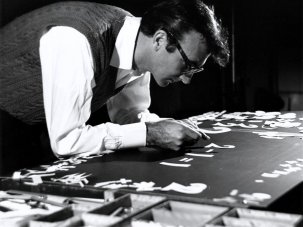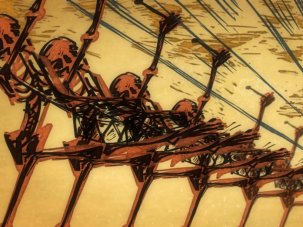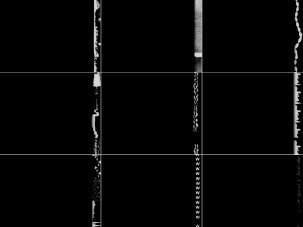A series of stumbles can look like running. That’s how it feels to try to become good at something new. We are forever tripping up, delaying the moment of impact just long enough to trip up all over again. Awkward, gawky and bleeding at the knees, but somehow moving forwards.
Richard Williams presented Mikey Please with the Edinburgh Film Festival’s 2013 McLaren Award for Marilyn Myller, which also won the Best New British Animation award at the 2014 Encounters Film Festival.
Both Williams’ The Aninator’s Survival Toolkit and the National Film Board of Canada’s McLaren’s Workshop are now available as iPad apps.
Richard Williams’ new film Prologue [► trailer] premieres at the 2015 Encounters Film Festival.
This to me is good learning: embracing a string of screw-ups from which you can skim some sense of progress off the top. In the moment, it might feel like nonsense, but looking back you can see the journey.
I didn’t study animation in a formal setting. What I did have was a book. The book on how to animate: The Animator’s Survival Kit by Richard Williams. The title is misleading. It won’t teach you how to convert your inkwell into a nutritional stew, or splint your aching fingers with a pencil and rubber band. No. It is the Manual of Movement. For the believers, it is the Bible on how to bring the inanimate to life.
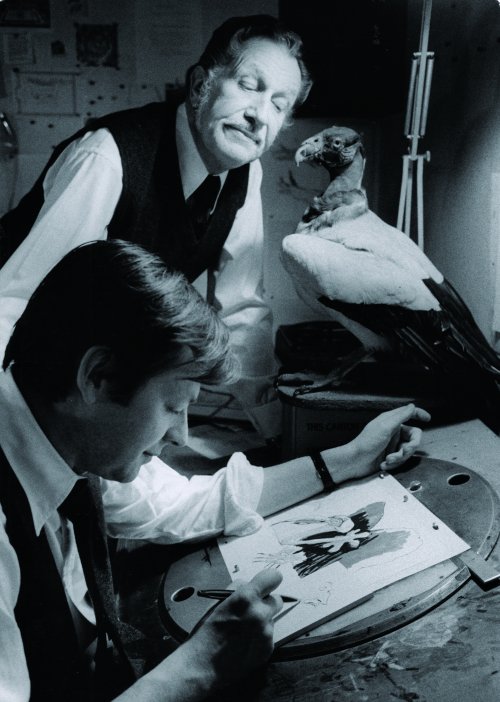
Richard Williams animating Arabian Knights (1995)
In an art form this young, no set of rules can be definitive. But these principles, gathered from half a century working with industry legends such as Ken Harris and Milt Kahl, distilled with Williams’s wit and craft of hand, comes pretty close. Williams’s own work, from his first film The Little Island (1958) to Who Framed Roger Rabbit (1988), is a testament to the honing of a craft. Learning with little steps, from project to project, all the way up to absolute mastery.
Animation continues to unveil its secrets. We know when it works: Bambi on the ice, Mrs. Incredible – Elastigirl – playing hot-potato with a telephone. We are still unearthing the mechanics of why it works. They are a set of physical laws unto themselves. Making something look lifelike will not necessarily make it look alive.
Like the annoying collector who buys the paint palette but ignores the painting, I’m often more interested by what goes on behind the scenes. Animated films can be a medley of several practices: music, mathematics, photography, performance and many others. For my own practice, hand in hand with the science of movement comes optical trickery.
Cue segue to Norman McLaren, painting picture and soundtrack by hand directly on to filmstrips, running them through Steenbeck editing machines. Norman had synaesthesia, a neural cross-wiring that caused him to involuntarily visualise colour and movement when listening to music, a true smooshing of sight and sound. Hence he was an experimenter, searching for ways to express this sensory crossover through technical combinations of his own.
He discovered his own set of principles over 60 short films, and they sit parallel with, but not contrary to, Williams. He compressed time directly on to filmstrip, showed echoes of movement in Muybridge-like overlays and made soundtracks without making a sound – his own dialect of the same language.
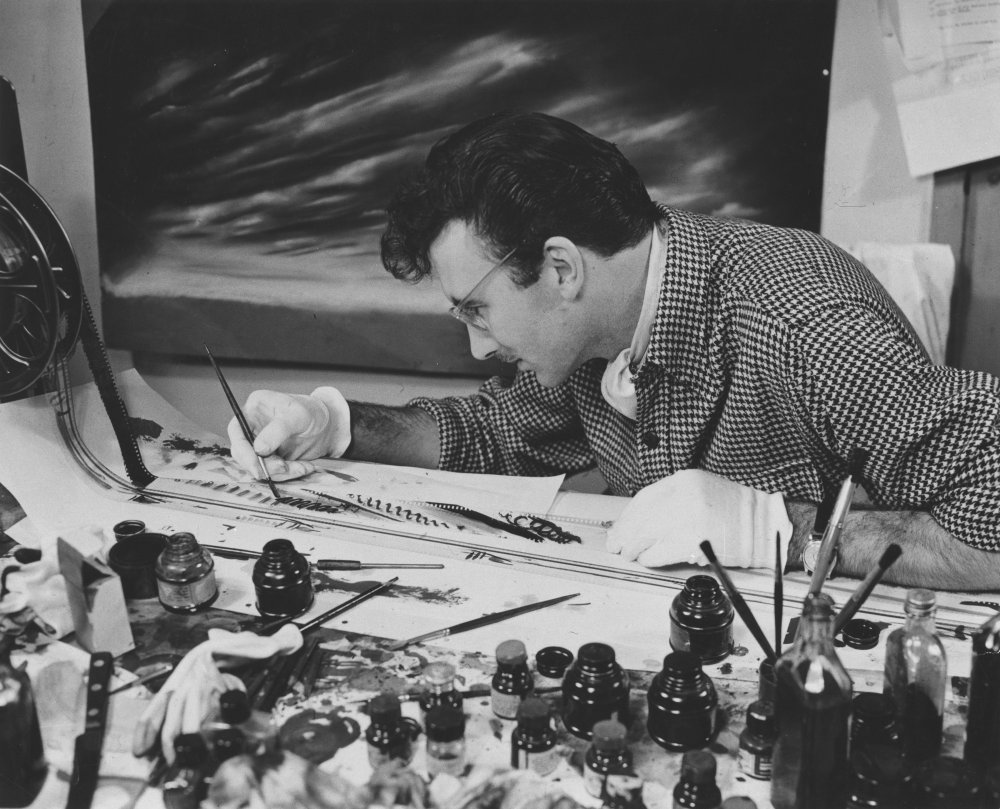
Norman McLaren at work
McLaren and Williams have much in common, both coming from a painting background and being frustrated by its limitations. They share an absurdist humour and playful timing, sheer ambition and dedication to deciphering the language of movement. Both were adamant that animation is not a genre but a technique.
So it was that these two maestros, and their divergent but complementary approaches to animation, were the signposts on my own clumsy stumble towards trying to become good at something new.
I had grand plans to pontificate about this with Richard when I got to meet him earlier this year [at the Edinburgh Film Festival’s awards, where Williams presented Please with the festival’s McLaren award for Marilyn Myller – Ed]. Thankfully, he skipped the bullshit, got excited about the concluding episodes of Breaking Bad, and we spoke about that instead. “What will Walt do? Will he get away with it? Perhaps he’ll start a secret life on witness protection as the Dad in Malcolm in the Middle?”
I’m glad we did, and happy to say that we both got to find out, very shortly after.
-
Sight & Sound: the October 2013 issue

In this issue: 40 years of The Wicker Man, plus The Great Beauty, Slavoj Žižek on cinema’s dark secrets, Claude Sautet’s noir classic...
-
The Digital Edition and Archive quick link
Log in here to your digital edition and archive subscription, take a look at the packages on offer and buy a subscription.





